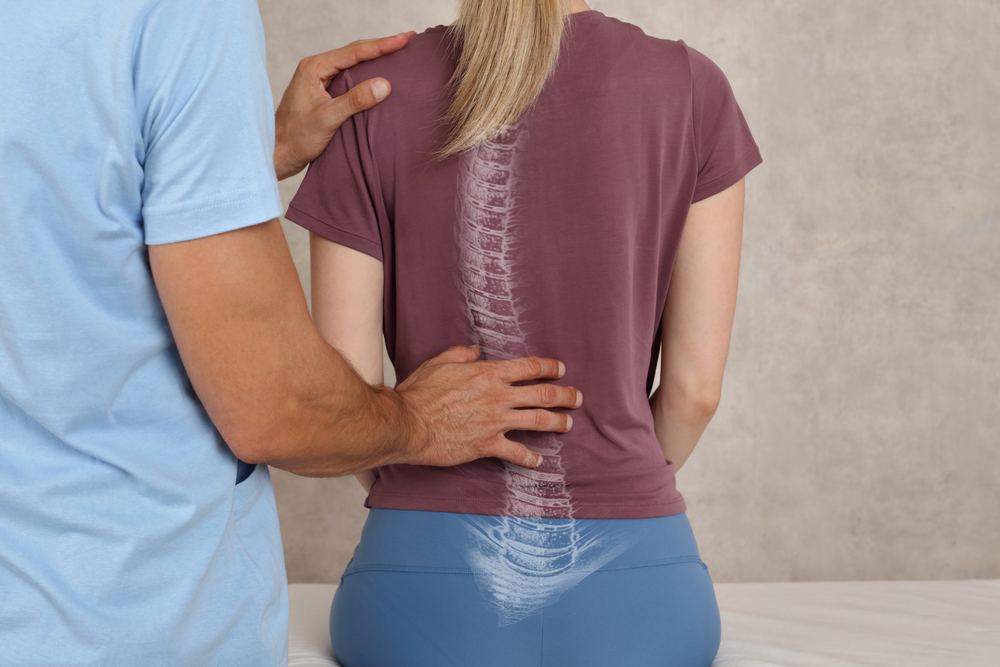Epidural administration can be difficult for patients with anatomical complexities, particularly scoliosis. The procedure encompasses placing neuraxial blocks for surgical treatments and child delivery, and it demands precision that traditional methods — reliant solely on palpation and clinician acumen — don’t consistently achieve. RIVANNA’s Accuro Neuraxial Guidance technology modernizes spinal navigation for epidural administration and vastly reduces the need for estimations. In turn, clinicians who rely on Accuro are administering epidurals with enhanced patient experiences and improved clinical outcomes, especially when treating scoliosis patients.

Problem
Conventional methodologies for epidural needle placement are saturated with ambiguity. For laboring patients presenting with scoliosis, anesthesiologists grapple with unique challenges. Spinal rotation is characteristic of scoliosis. Standard palpation methodologies are suboptimal because the spinous processes — generally relied on as anatomical landmarks — are misaligned by often subtle and occasionally extreme measures. This misalignment causes erroneous midline identification and, subsequently, incorrect needle trajectory.
“The traditional landmark technique … if you have a patient with scoliosis and you palpate the spinous processes, that’s actually not identifying your midline,” says Dr. Brandon Togioka, associate professor of anesthesiology and perioperative medicine at Oregon Health & Science University. “That location is going to be to the convex side and the greater the degree of scoliosis, the greater the Cobb angle, the further on the convex side.”
This uncertainty often results in multiple needle passes, heightening patient discomfort and increasing the risk of complications such as inadvertent dural punctures that culminate in postdural puncture headaches. These complications bear not only immediate repercussions but also potentially persistent or irreversible morbidities.

Solution
In cases of complex anatomy resulting from scoliosis, Accuro Neuraxial Guidance technology is an indispensable tool. Accuro’s SpineNav3DTM image recognition technology fundamentally alters the procedural experience for both patients and healthcare professionals. And, distinct from generic ultrasound equipment, Accuro is engineered explicitly for spinal interventions. Its simplicity ensures that busy clinicians can learn it quickly, use it intuitively, and achieve immediately improved results.
In scoliosis patients, where adipose tissue is less of a barrier, Accuro’s technology tackles the crux of the challenge: identifying the most accurate needle insertion point and trajectory. The device’s ability to furnish a clear, real-time spinal image, regardless of spinal abnormalities, markedly amplifies procedural precision and safety. It curtails needle insertions with an 81% first-insertion success rate, mitigating the potential for complications caused by multiple attempts.
“Having a probe that was specifically designed to image the back is quite helpful because it has these characteristics that are required to best optimize your view,” says Dr. Togioka. “I think this is a population that really can benefit by having this technology.”
Accurate neuraxial placement avoided the use of general anesthesia and mitigated the potential for complications during labor and delivery. Moreover, the ability to administer neuraxial anesthesia with fewer needle insertions resulted in higher patient satisfaction.

Key takeaways
Accuro circumvents the specific hurdles in epidural administrations to scoliosis patients, reducing the risks and imprecision of traditional palpation techniques and generic ultrasound imaging.
Medical practitioners embracing this technology for neuraxial procedures — particularly those involving anatomical complexities — will experience enhanced precision, diminished procedural timelines, and assurance in the efficacy of epidural catheters. Accuro’s influence is comprehensive, bolstering overall patient safety, comfort, and confidence in the parturition process.
